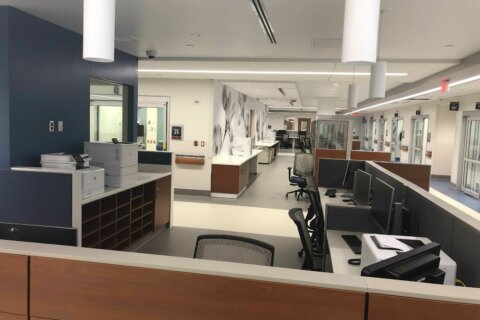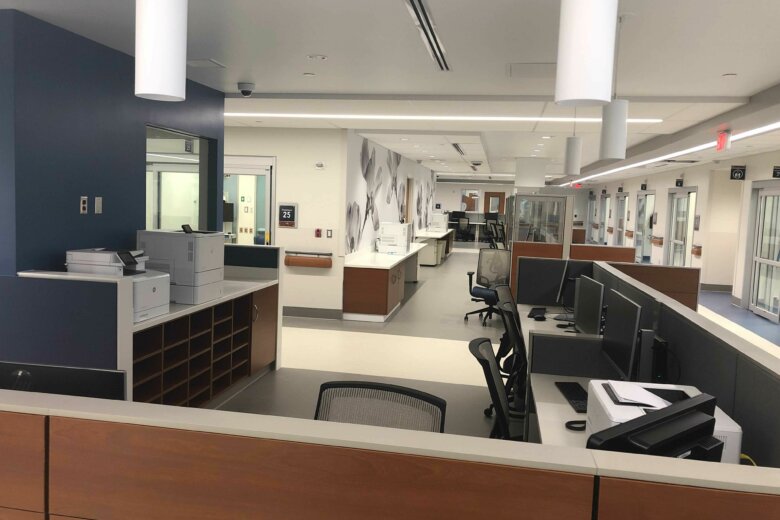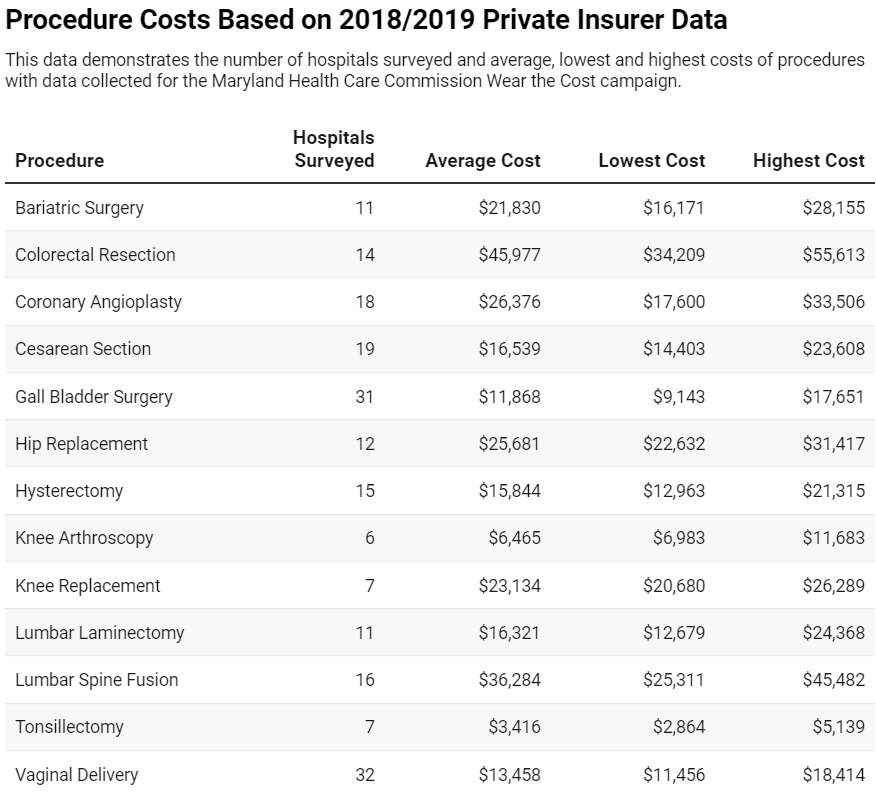This article was republished with permission from WTOP’s news partners at Maryland Matters. Sign up for Maryland Matters’ free email subscription today.

This content was republished with permission from WTOP’s news partners at Maryland Matters. Sign up for Maryland Matters’ free email subscription today.
How much does it cost to give birth in Maryland? It depends on which hospital you choose.
In 2019, the Maryland Department of Health reported 209,836 live births. And, according to the Maryland Health Care Commission’s Wear The Cost campaign, if the mother had private insurance and underwent a cesarean section, she could expect the procedure to cost an average of $14,695 and, at its highest, $23,608.
Vaginal births that year had an average medical bill of $13,458, but could reach up to $18,414.
Those are huge financial discrepancies.
But the Maryland Health Care Commission said common procedures like c-sections and vaginal births are “shoppable,” allowing expectant families to compare prices before selecting a hospital.
The commission has updated its Wear the Cost campaign data to provide financial transparency for cost of childbirth and 11 other common medical procedures, including hysterectomies, knee replacements and tonsillectomies.
The lowest cost for a tonsillectomy at seven hospitals surveyed was $2,864. But the same procedure at a different hospital cost almost twice as much: $5,139. The highest cost reported for a colorectal resection was $55,613 — more than $21,000 more than the lowest cost among 14 hospitals surveyed.
“Patients have a right to know what private payers are paying for their health care, how that affects their out-of-pocket costs, and what to expect in terms of quality,” Ben Steffen, the executive director of the Maryland Health Care Commission, said in a statement.
The updated price information is based on private insurance provider data for 2018 through 2019. The costs include every service necessary to treat a medical need — like testing, prescriptions and visits before, during and after operations — for each procedure.
According to the Wear The Cost campaign website, prices at some hospitals can just be higher. But often, patients are hit with big medical bills because of potentially avoidable complications, which are oversights or errors that cause harm to the patient that may have been preventable.
For example, patients who receive hip replacements expect to pay for certain services, like consultations, lab testing and radiology, surgery, nursing care, post-operation doctor visits, physical therapy and crutches. But often patients get saddled with bills for complications like infections, which can add an additional $20,000 to their hospital bill.
The Journal of the American Medical Association reported that 17.8% of Americans were struggling with medical debt collections in June 2020. And a 2020 poll from the Kaiser Family Foundation demonstrated that over 40% of its respondents would be overburdened with an unexpected medical bill of just $500.
“It’s no secret that many Americans worry about unanticipated medical bills, but it doesn’t have to be this way,” Steffen said. “This data provides Marylanders with accurate information for over a dozen of the most common medical procedures, empowering patients with the knowledge they need to choose the hospital that best fits their needs.”









